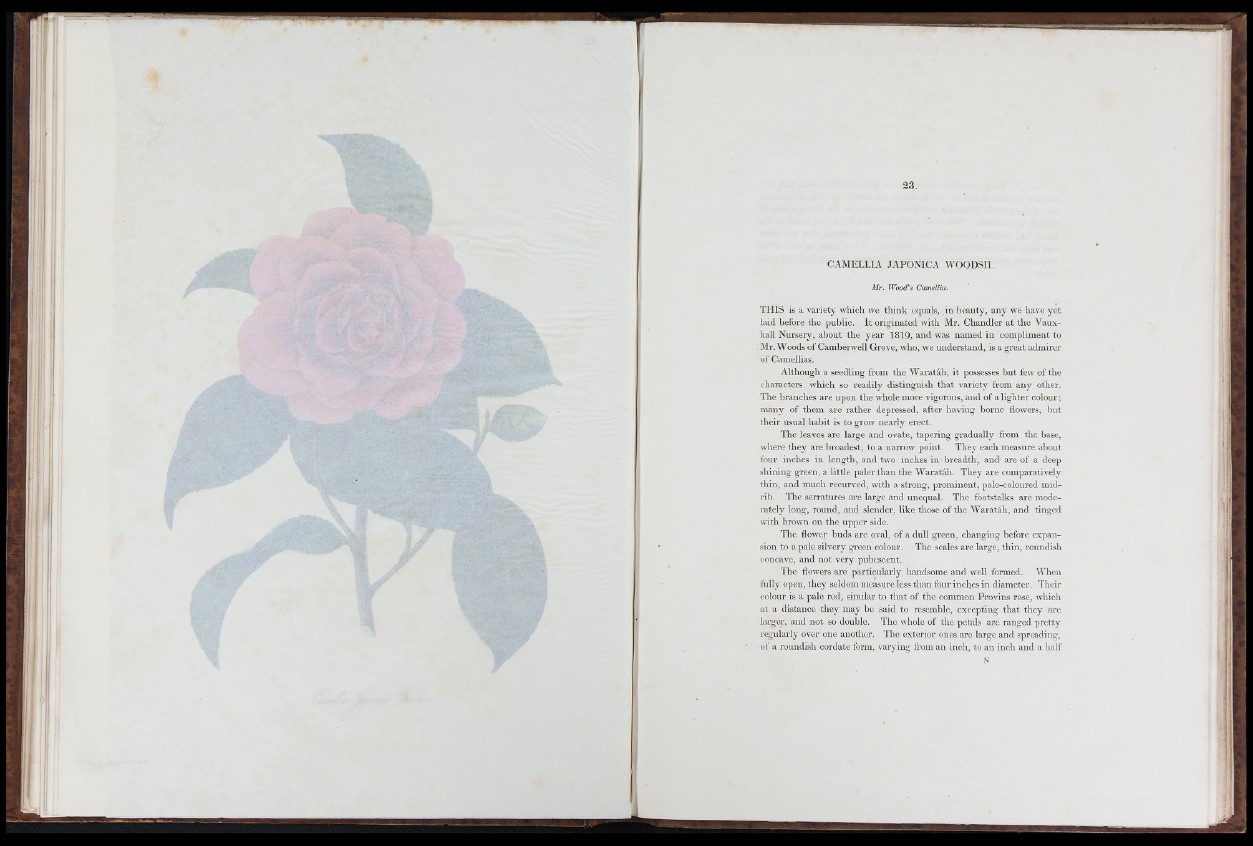
3 3 .
CAMELLIA JAPONICA WOODSII.
M r. Wo o d 's Camellia.
THIS is a variety which we th in k equals, in beauty, any we have yet
laid before the public. I t originated with Mr. Chandler a t th e Vauxhall
Nursery, about the year 1819, and was named in compliment to
Mr. Woods of Camberwell Grove, who, we understand, is a great admirer
of Camellias.
Although a seedling from the Waratáh, it possesses b u t few of the
characters which so readily distinguish th a t variety from any other.
The branches are upon the whole more vigorous, and of a lighter colour;
many of them are rather depressed, after having borne flowers, but
their usual habit is to grow nearly erect.
The leaves are large and ovate, tapering gi-adually from the base,
where they are broadest, to a narrow point. They each measure about
four inches in length, and two inches in breadth, and are of a deep
shining green, a little paler than the Waratáh. They are comparatively
thin, and much recurved, with a strong, prominent, pale-coloured midrib.
The serratures are large and unequal. The footstalks are moderately
long, round, and slender, like those of the Waratáh, and tinged
with brown on the upper side.
The flower buds are oval, of a dull green, changing before expansion
to a pale silvery green colour. The scales are lai-ge, thin, roundish
concave, and not very pubescent.
The flowers are particularly handsome and well formed. When
fully open, they seldom measure less than four inches in diameter. Their
colour is a pale red, similar to th a t of the common Provins rose, which
a t a distance they may be said to resemble, excepting th a t they are
larger, and not so double. The whole of the petals are ranged pretty
regularly over one another. The exterior ones are large and spreading,
of a roundish cordate form, varying from an inch, to an inch and a half